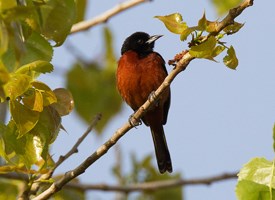While I waited to plant my little seedlings these past few weeks, I perused several gardening books that I got online for my Kindle Fire. There are quite a selection of e-books available on various aspects of gardening. Some I downloaded were good, some not so good. Fortunately for me, I got them all on days when each was offered for free, and so I spent nothing for the information that I gained, as well as spending nothing on those that were a bust. Here are some of the ones I decided were "keepers:"
SOME GARDENING BOOKS I RECOMMEND :
 |
A really well-written book of four pamphlets with loads
of information and innovative ideas. How about growing
potatoes in a 30 gallon Rubbermaid garbage can on your
deck or balcony?!
|
 |
This book is a great introduction to composting and
raised beds.
|
 |
A good book that will convince you of the value
of raised beds. It doesn't actually show you how
to build them, however.
|
 |
This short book gives some good info on these
particular vegetables which are ones I will be
planting quite aggressively.
|
 |
A really good book that gives great ideas for
gardening in almost any situation, and especially
for urban dwellers. It proves you can garden just
about anywhere. I really liked that!
|
I have been composting now for several years. My two bins are just old plastic 30 gallon garbage cans with lids that I alternate from season to season. The way I do it, one bin is ready to use every 6 months or so. I use my compost in addition to the llama beans I mentioned last post. This combination of added material to my garden beds insures plenty of nutrients that break down quickly to create a rich growing medium for plants and seeds, and surprisingly fewer weeds to pull.
.jpg) |
Here are my two bins made from old Rubbermaid
30 gallon garbage cans. The lids lock on to deter
any curious creatures from checking out the contents.
|
.jpg) |
We drilled holes all around the upper and base of the
bins in order to promote good air circulation for faster
decomposition of the contents.
|
I keep a bucket under the kitchen sink where I collect items to add to the compost bin each week. I put my coffee grounds, eggshells, raw vegetable cuttings, onion skins, orange and banana peels, small pieces of cardboard, and the like. You will be surprised at how quickly these things can add up, as well as how quickly they become usable in your garden! Just remember that you do not want to include anything like meat, fat, grease, kitty litter or animal droppings, as this will make your compost smell or even die! You don't want that, do you?!
This weekend I planted the rest of the containers for the cotton and put them way out front away from the variety I planted in the main garden. This last batch of seeds was from white cotton that seemed to have a yellowish cast to it compared to the rest of the white. I planted the darkest and bluest green cotton seeds in the main garden. I also gave some brown cotton seeds to a friend to plant in her garden. Wanda's seeds were some of the Sea Island Brown cotton that had more of a reddish cast than the rest of my crop from last year. I can't wait to see what happens with these variations of the originals I had planted. I enjoy a good experiment!
And so I am really enjoying the blossoms on my "butterfly rose" bush (Mutabilis) and soon my chaste bush/trees will present their purple blue spires for me, the bees and butterflies to enjoy.
The greenish yellow bird I saw last week in my front yard was not the yellow-throated vireo that I thought it was. After a bit more research and sightings of the male that accompanied it, I now have identified it as a female orchard oriole. For several years I have seen a male of this species in my back pastures singing his heart out at the top of the trees, but I don't recall noticing the female, even though I knew that she must be out there. I do recall seeing a yellowish green bird fleetingly at times, but it was not enough to be able to identify it. This time, last week's sighting, was in the front yard close enough to really see the female as it perched on a bare branch of the crepe myrtles in between making acrobatic swoops for insects. Several times during this past week, I saw a male orchard oriole out in the front yard at the same time, and I put two and two together, along with some online research, where I was even able to hear the music of this happy songster.
 |
| Male Orchard Oriole |
You can go to this site online and read all about them and even hear recordings of the glorious songs that I enjoy in my back, and now front, yard! http://www.allaboutbirds.org/guide/orchard_oriole/sounds
Finally, on Saturday Ben and I discovered some baby cottontails on an adventure in some high grass in our front yard. (The front yard has been a very busy place lately!) They were quite a ways from the two brier patches. We grabbed them and put them back (hopefully in the right one) and hope that Mrs. Cottontail found her naughty babies soon afterwards.
 |
| Baby cottontail bunny |
 |
| Entrance to the brier patch where we deposited the little bunnies. |
Well, I guess that is all for now from HeartSong Farm. Next week we'll be shearing the llamas.
.jpg)
.jpg)
.jpg)
No comments:
Post a Comment